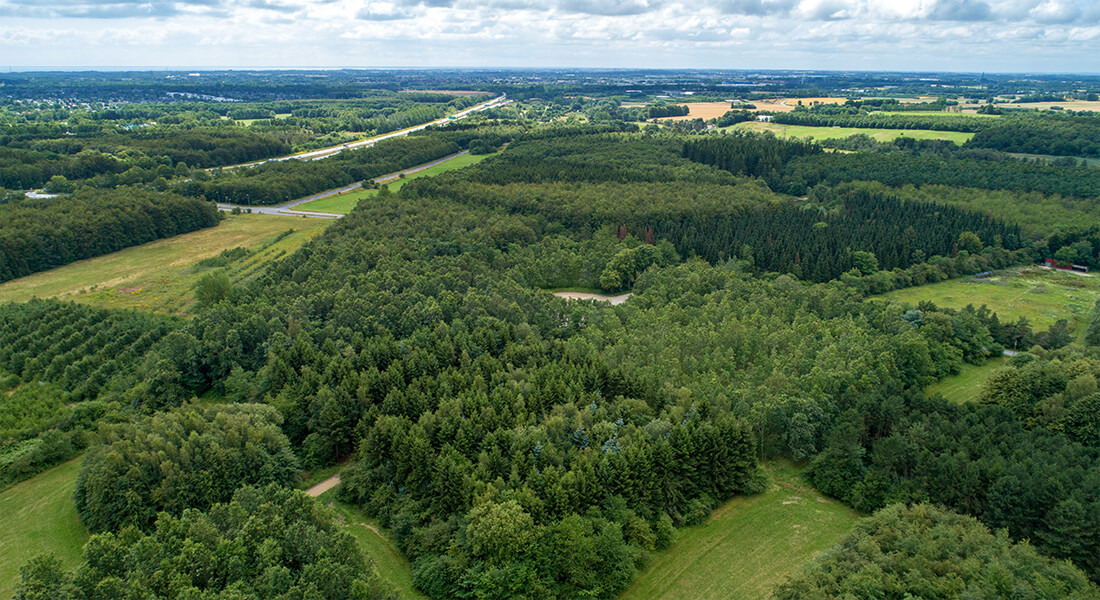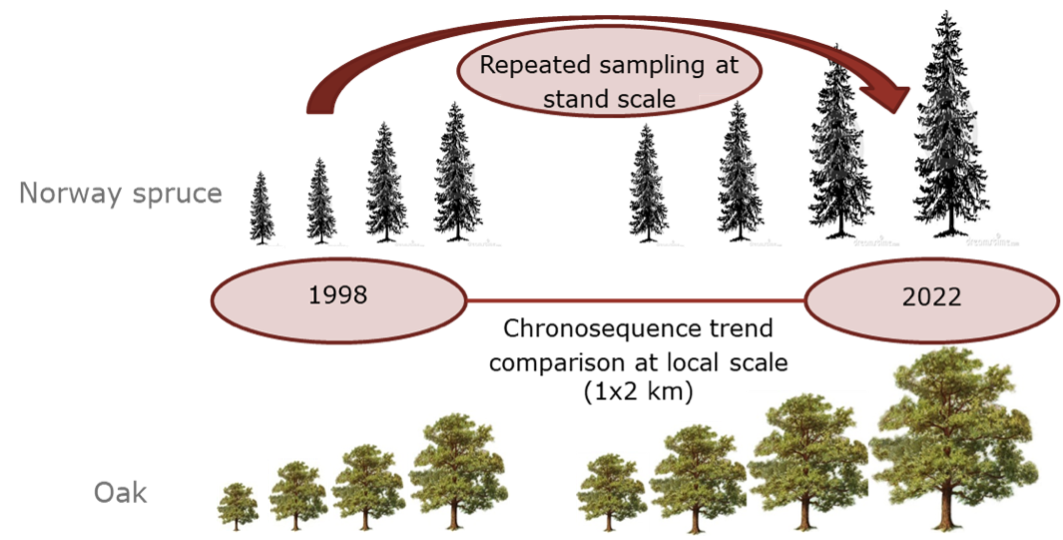Vestskoven – the afforestation platform

The Vestskoven experimental forest site is a unique platform to study land-use change effects related to afforestation of former cropland on ecosystem functioning and represents an ‘ecosystem in transition’ platform. Three chronosequences in oak, beech and Norway spruce track the effects of cropland to forest conversion using coniferous or deciduous tree species, respectively. Further, there are agriculture, grassland and an old-growth reference sites. Changes in ecosystem functioning may be assessed by 1) a space-for-time substitution approach (i.e. using the chronosequences) or 2) repeated sampling of ecosystem processes in georeferenced and permanently marked plots. An upgraded climate station has been installed.
One oak stand is an ICP Forests Level II monitoring plot since 2002 with the full monitoring Level II program carried out except for ozone damage and ambient air quality.
The oak and spruce stands have since 1998 and beech since 2011 repeatedly been characterized with respect to soil chemistry, stand characteristics and ground vegetation, providing knowledge on developments after afforestation in key ecosystem services such as carbon sequestration in biomass and soil, water quality, water recharge and biodiversity.
The experimental platform is unique in the number of differently aged stands as well as the possibility to address afforestation with two or three tree species with contrasting traits. This platform is different from single plot studies in its multi-plot character.
A new development is the current focus on the site as a research platform to address development in biodiversity in soil microbiome, soil fauna and ground vegetation and interactions between biogeochmistry and soil microbiome over time to unravel how restoration of soil biota communities may contribute to improrve on ecosystem service provisioning related to GHG emissions, water quality and biodiversity.

Contacts
Prof. Lars Vesterdal
Biogeochemistry
Prof. Inger Kappel Schmidt
Biodiversity
Assoc Prof. Morten Ingerslav
ICP Forest
